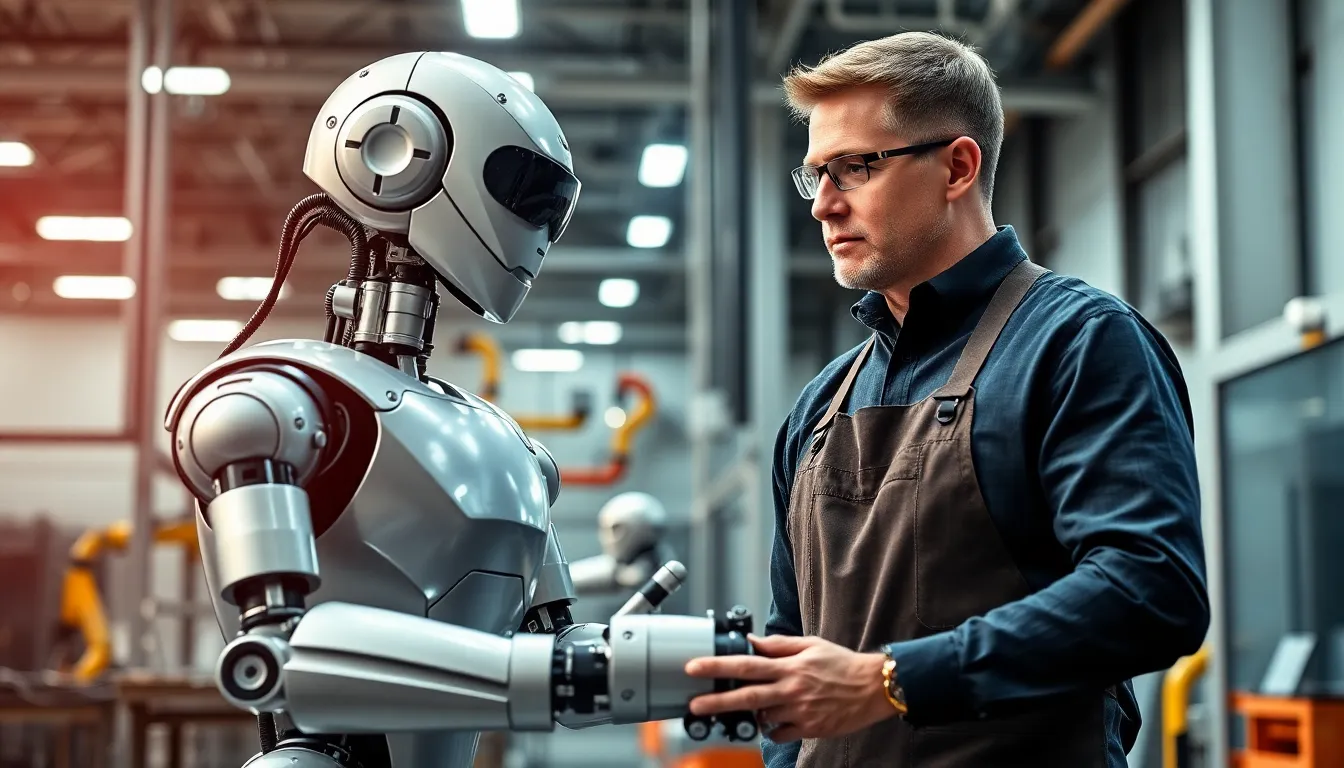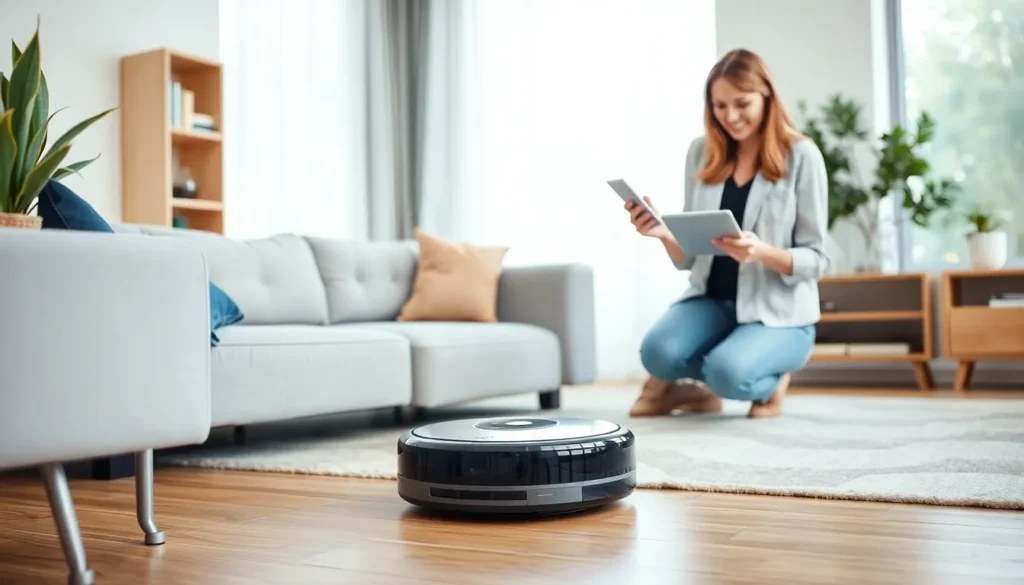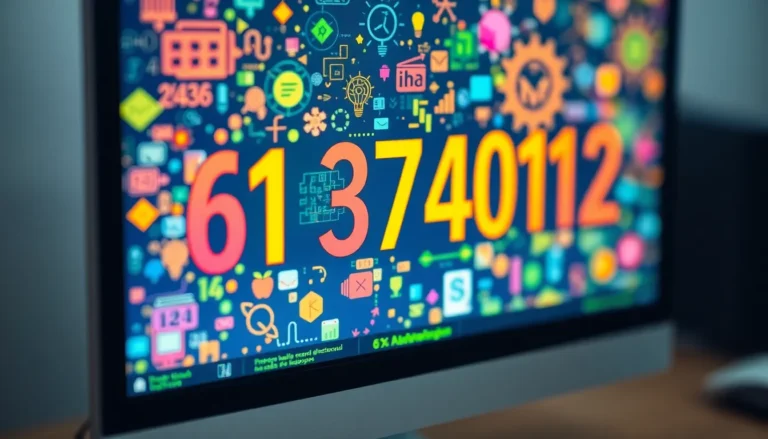In a world where robots are no longer just the stuff of sci-fi movies, modern robotics has taken center stage. Forget clunky machines that can barely navigate a room; today’s robots are sleek, smart, and often more capable than your average office intern. From robotic vacuum cleaners that dodge furniture like seasoned ninjas to industrial arms that can assemble products faster than a caffeinated assembly line worker, the evolution is nothing short of remarkable.
But it’s not all serious business. Imagine a future where your robot buddy not only helps with chores but also cracks jokes to lighten your mood. As technology advances, the line between man and machine blurs, and the possibilities become endless. Dive into the fascinating world of modern robotics, where innovation meets a touch of humor, and discover how these mechanical marvels are reshaping our lives one quirky task at a time.
Table of Contents
ToggleOverview of Modern Robotics
Modern robotics represents significant advancements in technology, transforming machines into intelligent, versatile tools. Contemporary robots perform tasks across various sectors, showcasing remarkable capabilities.
Definition and Key Concepts
Robotics involves creating and utilizing robots to perform specific tasks. Key concepts include automation, artificial intelligence, and machine learning. Automation streamlines operations in manufacturing and logistics. Artificial intelligence enhances decision-making capabilities, allowing robots to adapt to dynamic environments. Machine learning enables robots to learn from experiences, improving efficiency over time.
Evolution of Robotics Technology
Robotics technology has evolved considerably over the past few decades. Early robots were limited to simple, repetitive tasks within controlled environments. In contrast, modern robots incorporate advanced sensors and processors, allowing for greater adaptability. They increasingly utilize collaborative robotics, where humans and machines work alongside each other. Significant advancements in artificial intelligence and computer vision expanded the range of tasks robots could perform, from mundane chores to complex surgeries. Automation now supports industries ranging from agriculture to healthcare, demonstrating the transformative impact robots have on society.
Applications of Modern Robotics

Modern robotics finds applications across multiple sectors, significantly enhancing efficiency and productivity. Innovations shape industries, making tasks safer and faster.
Industrial Automation
Industrial automation relies heavily on robotics to streamline production processes. Robots handle repetitive tasks like assembly, welding, and painting with precision. They operate continuously without fatigue, increasing output rates. Collaborative robots, or cobots, work alongside human workers, promoting safety and efficiency. In 2023, industries saw a 30% reduction in operational costs due to robotic automation (source: International Federation of Robotics). These advancements result in higher quality products and faster turnaround times, transforming manufacturing landscapes.
Healthcare Innovations
Healthcare innovations leverage robotics to improve patient outcomes and operational efficiency. Surgical robots perform minimally invasive procedures, allowing for faster recovery times. Robots assist in rehabilitation, providing personalized therapy to patients. According to recent studies, robotic assistance in surgeries reduces complications by 20% (source: Journal of Robotic Surgery). Additionally, robotic systems streamline hospital logistics, efficiently managing medication delivery and inventory. These applications enhance precision and reduce the burden on healthcare professionals.
Service Robots in Daily Life
Service robots play a pivotal role in daily life, enhancing convenience and comfort. Robotic vacuum cleaners autonomously navigate homes, cleaning floors with minimal human intervention. Delivery robots transport groceries and meals, making shopping experiences seamless. Research indicates that consumer acceptance of service robots increased by 40% in the last year (source: Robotics Business Review). As robots become more integrated into households, they assist with various tasks, freeing time for people to focus on personal interests and activities.
Challenges in Modern Robotics
Modern robotics faces significant challenges that impact development and integration across various sectors. Addressing these challenges is essential for future advancements.
Ethical Considerations
Ethical considerations play a crucial role in the evolution of robotics. Developers must ensure robots respect user privacy and operate transparently. Concern arises over the potential for job displacement as robots automate tasks. Society needs to evaluate how technology affects employment opportunities and wage disparities. Moreover, creating guidelines for responsible AI usage prevents misapplication of robotics in sensitive areas, such as surveillance and military operations. Unintended consequences from autonomous decision-making systems pose threats that demand careful scrutiny. Establishing comprehensive ethical frameworks can help guide the responsible growth of this dynamic field.
Technical Limitations
Technical limitations continue to challenge the progress of modern robotics. Advanced algorithms require substantial computational power, which can increase costs and reduce accessibility for smaller businesses. Sensor technologies, while improving, often struggle with environmental variations, leading to decreased efficiency in real-world applications. Many robots lack the adaptability necessary to operate effectively in unpredictable environments, limiting their potential use cases. Collaboration between robots and humans remains complex due to communication barriers and differing operational speeds. Performance consistency also concerns industries relying on robotics for precision tasks. Overcoming these technical hurdles is vital for maximizing the impact of robotic technologies across sectors.
Future Trends in Modern Robotics
The future of robotics shows promising advancements that enhance capabilities across industries. Such trends revolve around improved intelligence and connectivity.
Advancements in AI and Machine Learning
AI’s evolution drives robotics toward greater autonomy. Innovations enable machines to learn from experience, reducing reliance on human programming. Complex algorithms analyze vast data sets, allowing robots to make informed decisions in real-time. Consequently, robots enhance precision in various tasks, like surgical procedures and logistics. With AI’s support, robots adapt better to dynamic environments, proving crucial in unpredictable settings. The integration of machine learning signifies a move toward smarter systems that collaborate seamlessly with humans. Additionally, advancements in natural language processing enable intuitive interactions, making robots more accessible to the public.
Integration with IoT
Integration with IoT technology transforms robotics into highly interactive entities. Devices communicate continuously, sharing information to optimize performance. For example, smart factories leverage interconnected machines to streamline workflows and improve efficiency by 40%. Real-time data exchange enhances decision-making, as robots adjust operations based on current conditions. Moreover, the interconnectedness of devices supports seamless monitoring and maintenance, enabling proactive problem-solving. These advancements promote a new era of collaborative robotics, creating environments where robots and humans work together more effectively. Future developments will likely focus on strengthening this synergy, ensuring enhanced operational capacities in diverse scenarios.
Modern robotics stands at the forefront of technological advancement shaping various aspects of everyday life. With their remarkable capabilities and increasing integration into diverse sectors, robots are not just tools but partners enhancing human efficiency and creativity. As they evolve, the potential for robots to tackle complex challenges grows, promising a future where collaboration between humans and machines becomes the norm.
Addressing ethical and technical hurdles will be crucial in unlocking the full potential of robotics. The ongoing advancements in artificial intelligence and machine learning will drive this evolution, paving the way for smarter and more autonomous systems. As society embraces these innovations, the relationship between humans and robots will continue to transform, creating exciting possibilities for tomorrow.





